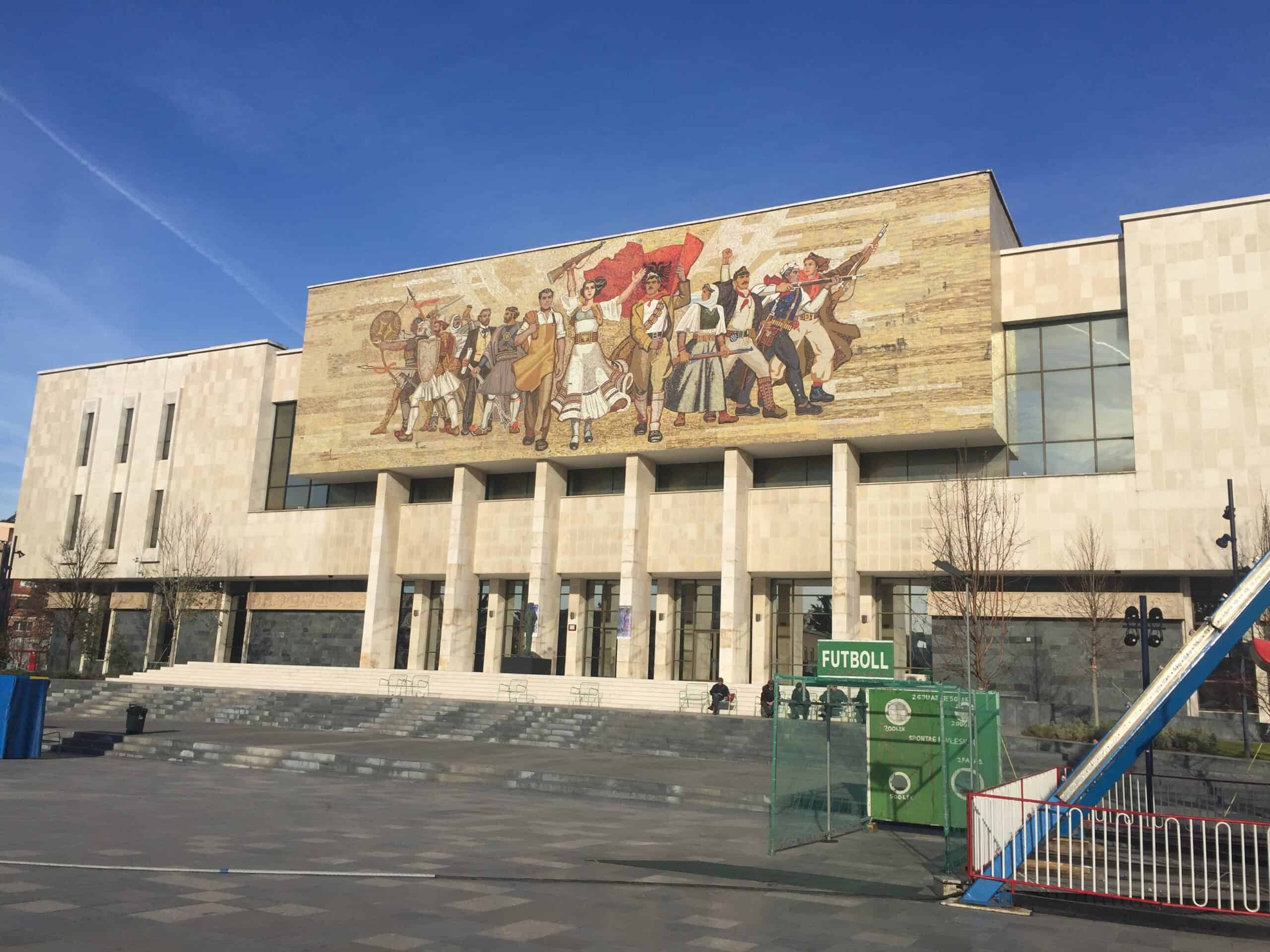
The National Historical Museum of Tirana is the most important museum in the capital and the whole of Albania. Inside its nine pavilions we retrace the history of the Albanian people and its territory.
Outside, right above the entrance to the museum, a large mosaic entitled ‘The Albanians’ depicts the Albanian people in history. Inside there are the various rooms divided according to the most important historical periods for the Albanian people and territory.
In the Pavilion of Antiquity are exhibited artifacts dating back to the Late Paleolithic period: objects of prehistoric houses and several sculptures.
Completely dedicated to the economic, social, political and cultural development of Albania is instead the pavilion of the Middle Ages. We can find documents and artifacts that testify to the development of agriculture on the territory, a collection of about 1000 books written in foreign languages, a collection of objects that belonged to the most important Albanian princes and documents that testify to the resistance of the Albanian people against the ancient dominating peoples of the Byzantines, Serbs and Turks.
In the Pavilion of the Renaissance there are documents of the historical period considered that goes from the beginning of the nineteenth century to independence, declared by Albania in 1912.
In the Independence Pavilion is the document of great value for the Albanian people: the Proclamation of Albanian Independence.
Entirely dedicated to the masters of Albanian iconography, the Iconography pavilion exhibits many works.
The pavilion of the Museum most focused on the history and development of Albanian culture is undoubtedly that of Ethnoculture. Inside there are musical instruments, handcrafted objects and old photographs but also the highly decorated traditional clothes of the various Albanian regions.
Starting from the events of the Vlora War of 1920, inside the pavilion of the Anti-Fascist War the main theme is precisely that of the Albanian communist resistance to Italian-German fascism during the Second World War.
Opened in 1996, the pavilion dedicated to the Communist Genocide deals with the delicate historical period between 1943 and 1992. In this room we can find the list of names of the people who, during the Communist dictatorship, were condemned and shot by the regime.
Inaugurated in 2014 on the occasion of Pope Francis’ visit to Tirana, the hall in memory of Mother Teresa of Calcutta, the most famous Albanian woman, was inaugurated. Many personal belongings and exhibits are found.
In the museum it is strictly forbidden to take photos.



